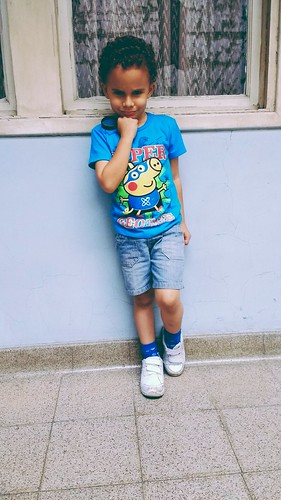He theory of planned behaviour mediate the effects of age, gender and multidimensional health locus of handle? Brit J Wellness Psych. 2002;7:299-316. 21. Sarker AR, Mahumud RA, Sultana M, Ahmed S, Ahmed W, Khan JA. The influence of age and sex on healthcare expenditure of households in Bangladesh. Springerplus. 2014;3(1):435. http://www.pubmedcentral.nih.gov/articlerender.fcgi?artid=4153877 tool=pmcentrez renderty pe=abstract. Accessed October 21, 2014. 22. Rahman A, Rahman M. Sickness and therapy: a circumstance evaluation amongst the garments workers. Anwer Khan Mod Med Coll J. 2013;4(1):10-14. 23. Helman CG. Culture, Well being and Illness: Cultural Aspects in Epidemiology (3rd ed.). Oxford, UK: ButterworthHeinemann. 1995;101-145. 24. Chrisman N. The well being searching for course of action: an approach to the organic history of illness. Cult Med Psychiatry. 1977;1:351-377. 25. Ahmed SM, Adams AM, Chowdhury M, Bhuiya A. Gender, socioeconomic development and health-seeking behaviour in Bangladesh. Soc Sci Med. 2000;51:361-371. 26. Ahmed SM, Tomson G, Petzold M, Kabir ZN. Socioeconomic status overrides age and gender in determining health-seeking behaviour in rural Bangladesh. Bull Globe Well being Organ. 2005;83:109-117. 27. Larson CP, Saha UR, Islam R, Roy N. Childhood diarrhoea management practices in Bangladesh: private sector dominance and continued inequities in care. Int J Epidemiol.  2006;35:1430-1439. 28. Sarker AR, Islam Z, Khan IA, et al. Estimating the cost of cholera-vaccine delivery from the societal point of view: a case of introduction of cholera vaccine in Bangladesh. Vaccine. 2015;33:4916-4921. 29. Nasrin D, Wu Y, Blackwelder WC, et al. Overall health care seeking for childhood diarrhea in establishing nations: evidence from seven web sites in Africa and Asia. Am a0023781 J Trop Med Hyg. 2013;89(1, suppl):3-12. 30. Das SK, Nasrin D, Ahmed S, et al. Wellness care-seeking behavior for childhood diarrhea in Mirzapur, rural Bangladesh. Am J Trop Med Hyg. 2013;89(suppl 1): 62-68.A major part of each day human behavior consists of producing decisions. When creating these choices, people today typically depend on what motivates them most. Accordingly, human behavior frequently originates from an action srep39151 selection course of action that takes into account irrespective of whether the effects resulting from actions match with people’s motives (Bindra, 1974; Deci Ryan, 2000; Locke Latham, 2002; McClelland, 1985). Even though persons can explicitly report on what motivates them, these explicit reports tell only half the story, as there also exist implicit motives of which folks are themselves unaware (McClelland, Koestner, Weinberger, 1989). These implicit motives happen to be defined as people’s non-conscious motivational dispositions that orient, pick and energize spontaneous behavior (McClelland, 1987). Typically, 3 distinct motives are distinguished: the will need for affiliation, achievement or energy. These motives have already been located to predict numerous diverse sorts of behavior, for Ro4402257 site instance social interaction fre?quency (Wegner, Bohnacker, Mempel, Teubel, Schuler, 2014), process overall performance (Brunstein Maier, 2005), and ?emotion detection (Donhauser, Rosch, Schultheiss, 2015). Despite the truth that lots of research have indicated that implicit motives can direct and manage people in performing a number of behaviors, tiny is recognized concerning the mechanisms via which implicit motives come to predict the behaviors folks decide on to perform. The aim in the present short article is always to supply a 1st attempt at elucidating this partnership.
2006;35:1430-1439. 28. Sarker AR, Islam Z, Khan IA, et al. Estimating the cost of cholera-vaccine delivery from the societal point of view: a case of introduction of cholera vaccine in Bangladesh. Vaccine. 2015;33:4916-4921. 29. Nasrin D, Wu Y, Blackwelder WC, et al. Overall health care seeking for childhood diarrhea in establishing nations: evidence from seven web sites in Africa and Asia. Am a0023781 J Trop Med Hyg. 2013;89(1, suppl):3-12. 30. Das SK, Nasrin D, Ahmed S, et al. Wellness care-seeking behavior for childhood diarrhea in Mirzapur, rural Bangladesh. Am J Trop Med Hyg. 2013;89(suppl 1): 62-68.A major part of each day human behavior consists of producing decisions. When creating these choices, people today typically depend on what motivates them most. Accordingly, human behavior frequently originates from an action srep39151 selection course of action that takes into account irrespective of whether the effects resulting from actions match with people’s motives (Bindra, 1974; Deci Ryan, 2000; Locke Latham, 2002; McClelland, 1985). Even though persons can explicitly report on what motivates them, these explicit reports tell only half the story, as there also exist implicit motives of which folks are themselves unaware (McClelland, Koestner, Weinberger, 1989). These implicit motives happen to be defined as people’s non-conscious motivational dispositions that orient, pick and energize spontaneous behavior (McClelland, 1987). Typically, 3 distinct motives are distinguished: the will need for affiliation, achievement or energy. These motives have already been located to predict numerous diverse sorts of behavior, for Ro4402257 site instance social interaction fre?quency (Wegner, Bohnacker, Mempel, Teubel, Schuler, 2014), process overall performance (Brunstein Maier, 2005), and ?emotion detection (Donhauser, Rosch, Schultheiss, 2015). Despite the truth that lots of research have indicated that implicit motives can direct and manage people in performing a number of behaviors, tiny is recognized concerning the mechanisms via which implicit motives come to predict the behaviors folks decide on to perform. The aim in the present short article is always to supply a 1st attempt at elucidating this partnership.